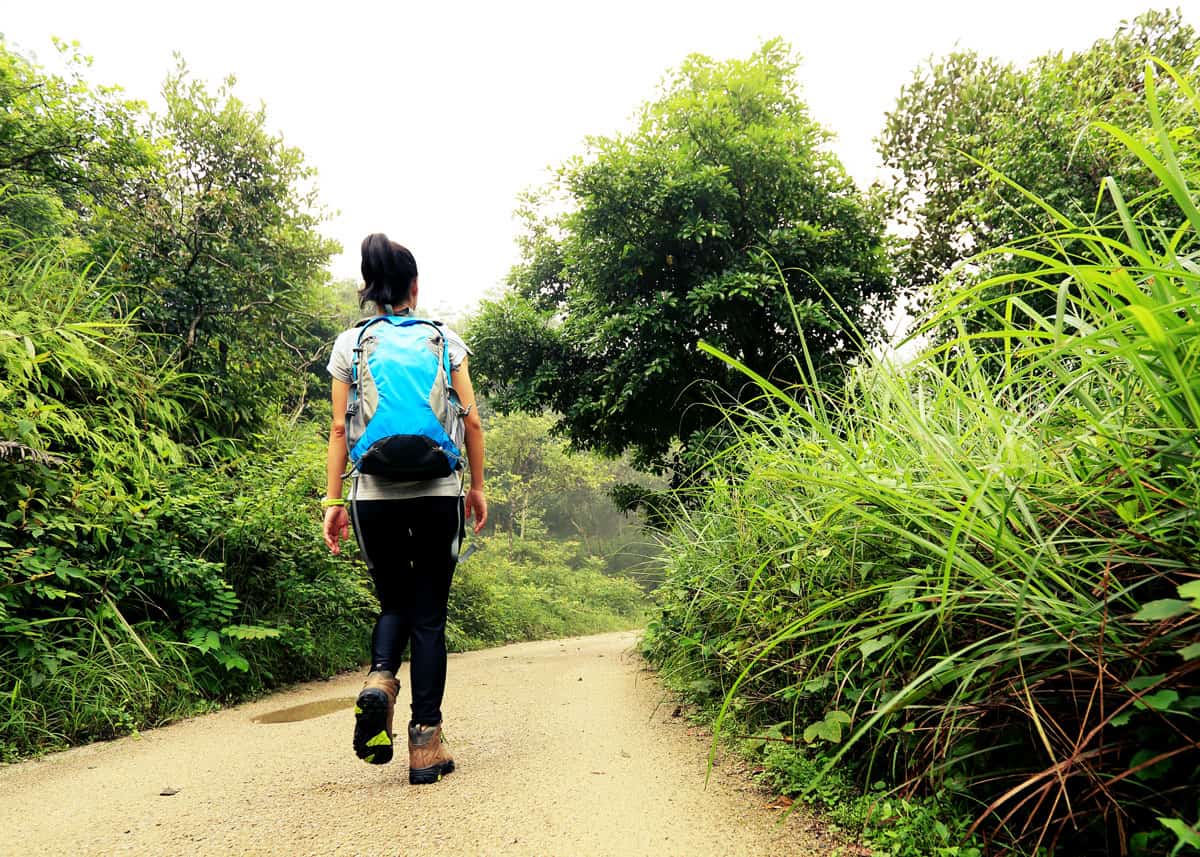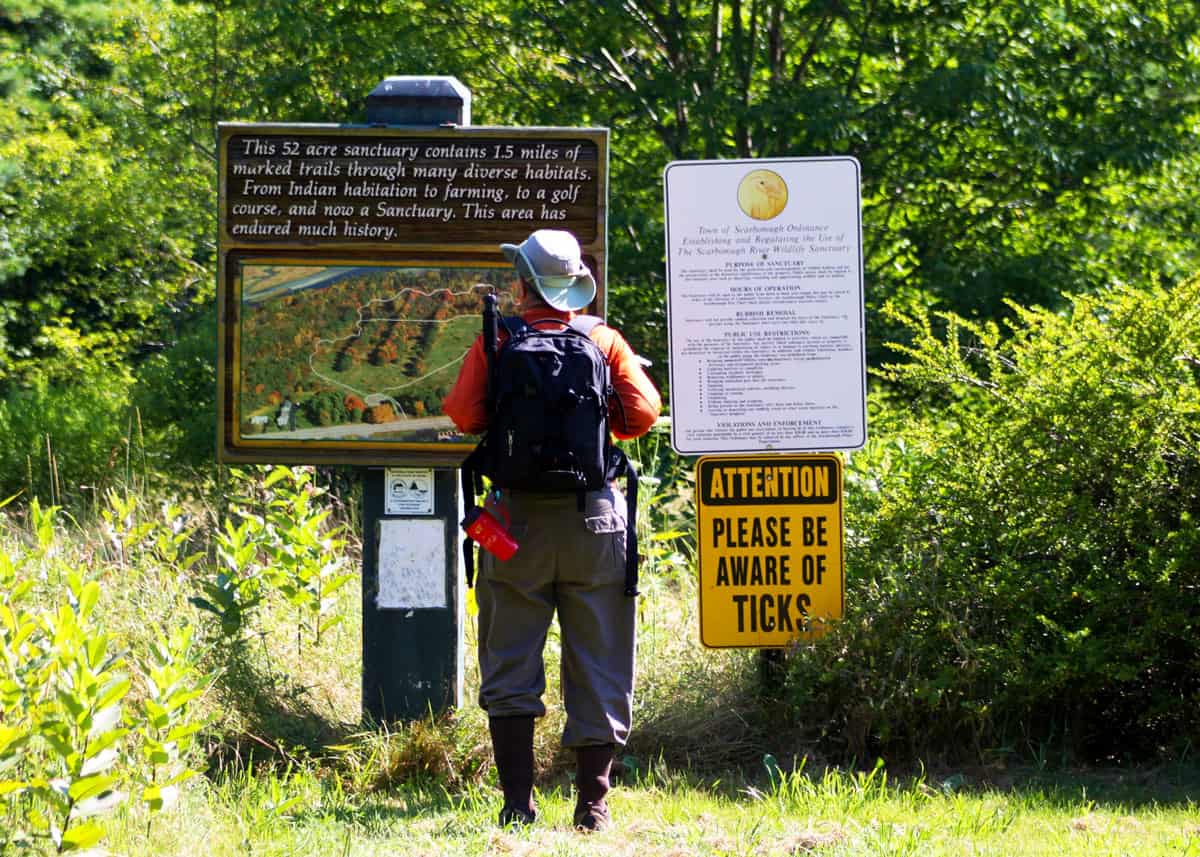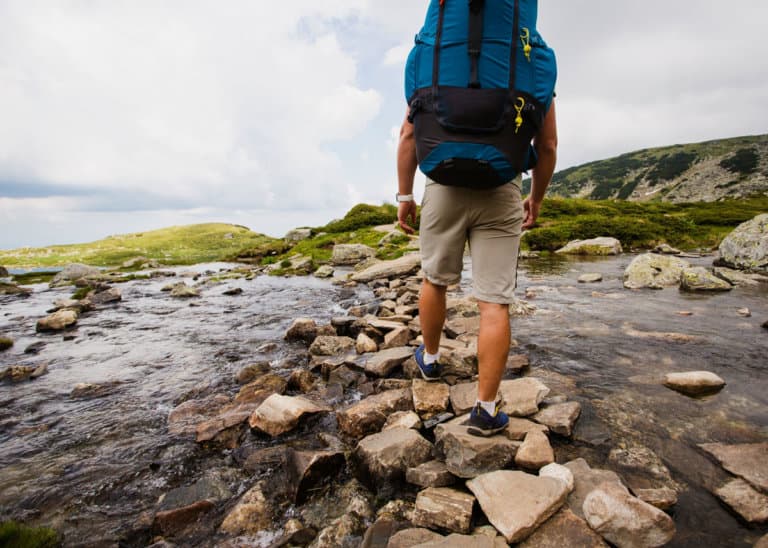How to Avoid Ticks While Hiking: 6 Practical Tips
Finding a tick on yourself after a hike is no fun – especially if it is attached. In this post, you’ll learn how to avoid ticks while hiking – and miss out on all the drama of removing these disgusting parasites.
Learning how to protect yourself from ticks is an important outdoor skill.

More reading: How to remove a tick head, after the body is gone
Protect Yourself From Ticks While Hiking
How do you prevent these sneaky little blood suckers from hitching a ride home with you? Well, there are certain things you can do to decrease the likelihood of them even wanting to get near you let alone come home.

Can you squish a tick? Get the answer, plus more tick facts
How to Avoid Ticks: 6 Tips
Now let’s discuss ticks, once you know their dislikes you can drastically decrease your chances of gaining a new unwanted creepy little blood-sucking friend.
1. Don’t hang out at their favorite spots
Ticks love those picturesque fields where you can wander through the long grass and wildflowers listening to a stream bubbling away nearby and see Bambi along with the whole deer herd go for a drink every day.
Yes, this is a tick paradise. See, research has shown that somewhere like that with a year-round supply of warm-blooded animals is capable of sustaining a denser tick population. Eeek.
They climb to the top of that tall grass and just hang out waiting for some poor unsuspecting host to wander past and they latch on. So to decrease your chances of picking up a little tick hitchhiker, stick to the path and avoid the long grass.
2. Wear the Right Gear
These days you can buy clothes treated with an excellent tick deterrent called Permethrin – which is something ticks hate.
You can get hiking clothes and socks pre-treated with Permethrin when you buy them so if a tick does happen to get on you, he won’t like what he finds and will just hop right off again.
You can also buy sprays to treat your clothes and camping or hiking gear which can be reapplied as needed. Or, using what you have on hand and giving a quick spray with your mosquito repellent works quite well too. Check current price of permethrin spray
3. Tuck your pants into your socks
Closing the opening are a powerful prevention barrier for ticks. I know, it doesn’t look amazing, but it is an effective way to avoid ticks on a hike.

4. Choose wide paths
It sounds like common sense right, but if you walk in the middle of a wide path or walking trail and are not brushing against a lot of vegetation, then your chances of picking up a hitchhiking tick are drastically lowered.
This is because ticks crawl up onto vegetation or long grass and just hang out waiting for you to pass by so they can latch on.
This process is called ‘questing’ and yes, it is pretty gross to think there is a little parasite waiting for you out there, but don’t let that deter you. Just keep it in mind when hiking, camping or walking to your favorite fishing spot.
5. Wear light-colored clothing
It’s not a fashion statement, it is a great way to actually see a tick if one gets on you. They are small and every one of their legs ends in a set of claws.
If that image isn’t terrifying enough, sometimes just giving your pant leg a bit of a shake won’t cut it, so before you start doing the ‘crazy tick dance’ trying to get one off of you, just remember you are bigger than them. You will win.
Plus, it is also a good way for your hiking buddy walking behind you to see the tick before it finds a home somewhere on your body.
6. Realize when you are likely to meet a tick
Spring and early summer usually have a higher concentration of baby ticks commonly known as nymphs, which are harder to spot, smaller and can carry disease pathogens just like their parents.
This makes them stealthy little blood-sucking stalkers and you guessed it, they are waiting to gorge on you so they can move onto the next stage of their life cycle.
Every tick has 3 to 4 life stages (larvae, nymph, adult, egg) and each stage requires a blood meal before morphing into the next stage of their life cycle. Gross right. Yeah, it is, but that should not deter you from getting out there and enjoying the great outdoors.
Wherever you choose to hike or go camping, just remember to ask a local, they will know the time of year and places that you are most likely to come across these crafty little parasites.
Want to avoid tick bites? Here are the 5 best tick repellents for humans.

How Long Does it Take a Tick To Transmit Lyme Disease?
If you do happen to find one, don’t freak out. It can take 36 to 48 hours of feeding before they transmit the bacterium that causes Lyme disease. ~ CDC.gov
Rather than grabbing a pair of tweezers (unless they are specially made for ticks), we recommend tick pliers. Probably the best way to remove a tick is with a tool made specifically for the job.
Sawyer Products makes a tool called “tick pliers”. If you get in the undesirable situation where all that’s left on the skin is its head, these pliers are worth a try.
These pliers separate the tick at the skin’s surface – preventing the unfortunate injection of the tick’s stomach contents into the person you’re trying to remove it from. And they have a raised edge so the tick is captured removed. These pliers work on people, cats, and dogs.
To use tick removal pliers, put them as close to the skin as possible and pull gently. This will remove them and you can be rid of your unwelcome house guest!
Your Turn
How do you avoid ticks while hiking? Let me know your questions and tips below!








